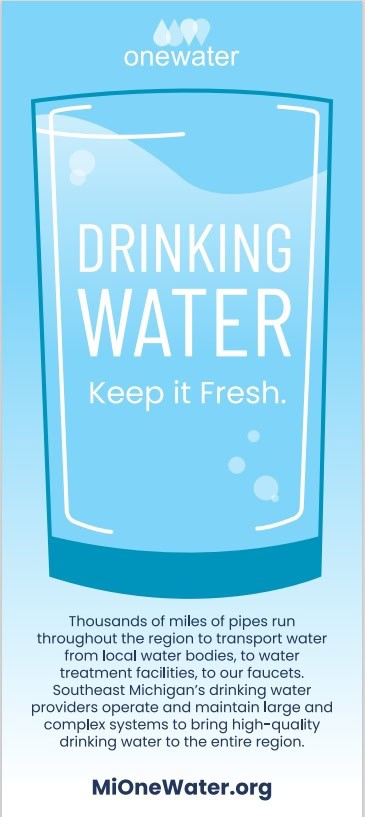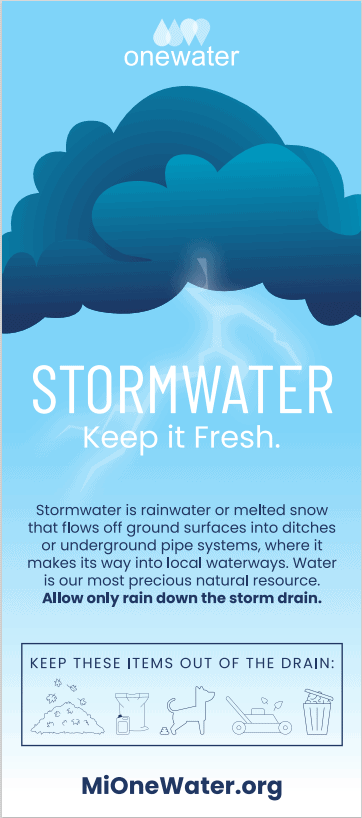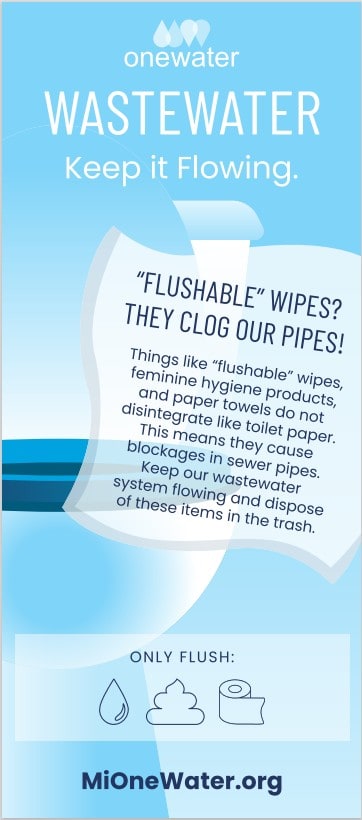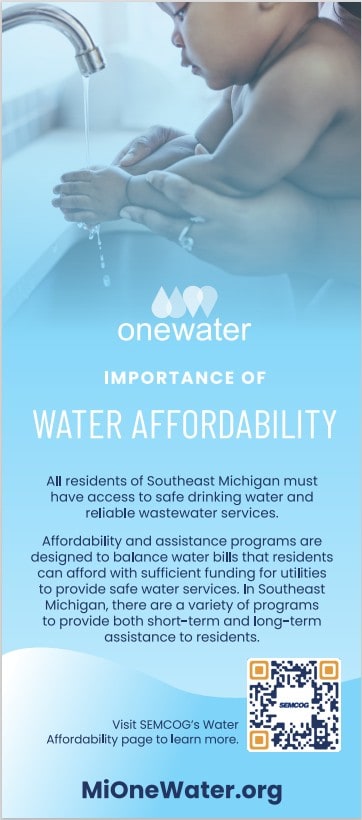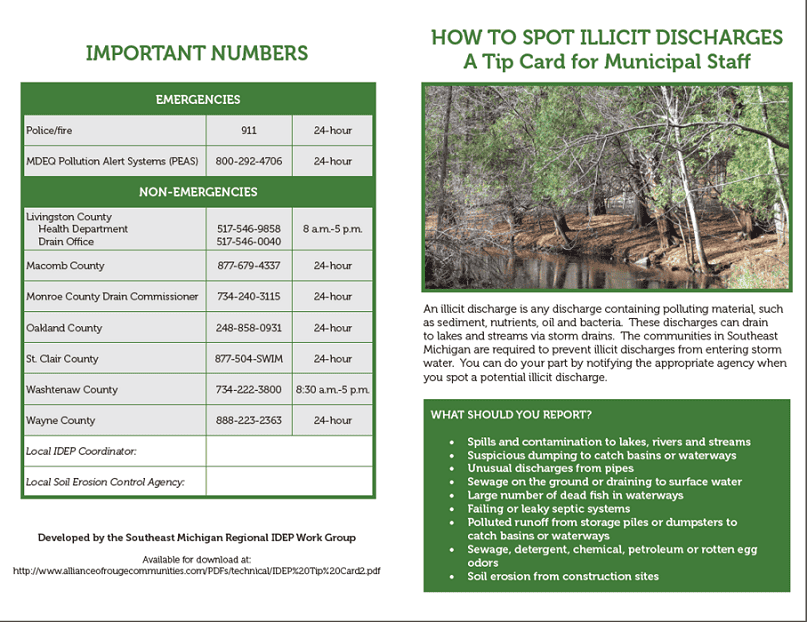Protecting Our Shared Water Resources
The One Water concept emphasizes a holistic understanding and shared responsibility for our water systems. The people of Southeast Michigan share in the benefits of our location at the heart of the Great Lakes. We also share a responsibility for the quality of:
- Our lakes, rivers, and streams
- Drinking water, waste water, and stormwater systems
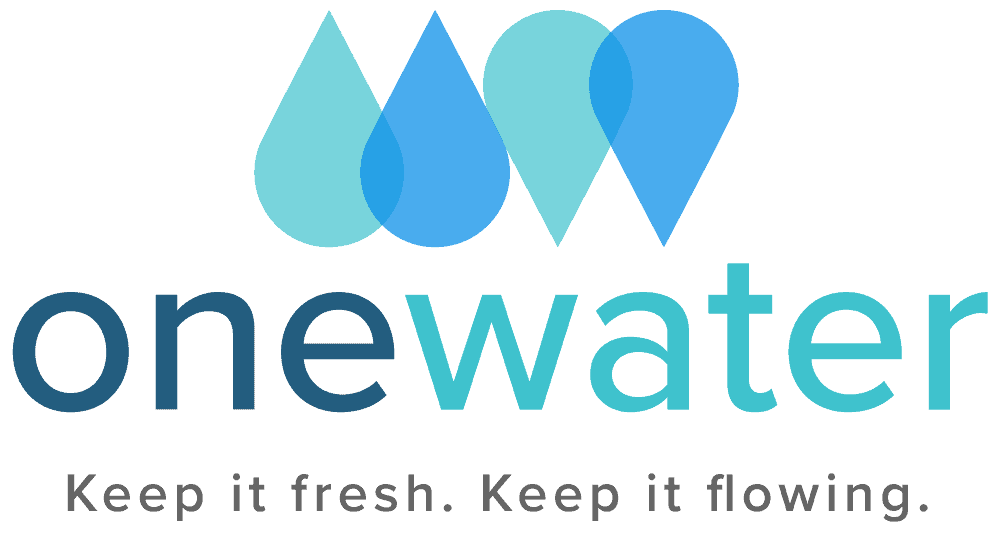
drinking water
Southeast Michigan sits at the heart of the Great Lakes, the planet’s greatest freshwater resource. As such, we are accustomed to having access to an abundance of high-quality water
Southeast Michigan’s providers operate and maintain large and complex systems to bring high-quality drinking water to the entire region. This water not only meets but exceeds the Safe Drinking Water Act requirements as well as other applicable and federal regulations.
stormwater
The lakes, rivers, and streams of Southeast Michigan provide the water we drink, an invaluable resource for our quality of life, recreation, and the economy. It’s important that we keep this water fresh by managing stormwater runoff. Stormwater is any water that falls to the ground, including rain, hail, and snow. This water flows off hard, impermeable surfaces and into our underground pipe system, where it makes its way into local waterways. Stormwater infrastructure plays a critical role om enhancing the local environment and protecting public health.
While stormwater is not inherently problematic. It does pick up whatever is on the ground in its path and brings it into our waterways. This includes garbage, pet waste, fertilizers, motor oil, and more.
Stormwater
keep it fresh
- Remove garbage, leaves, and other debris from your yard. This will help prevent unwanted debris from entering the storm drain.
- Keep local storm drains clear. If you notice a storm drain backed up with leaves, lawn clippings, or garbage. Remove the debris to allow water to flow freely.
- Pick up pet waste and dispose of it in the trash.
- Never fertilize your lawn before a storm event. If possible, reduce the amount your chemicals you apply to your lawn, including pesticides, herbicides, and fertilizers.
- If you can, implement a rain garden at your house. Green infrastructure, such as rain gardens, helps water absorb into the ground, preventing water and pollutant runoff.
- Help protect your property and community by keeping your valuables off the floor in your basement and avoid using your washing machine during intense storms and flash flooding.
- Check that your downspouts are directed away from your home to prevent flooding.
To learn more about our stormwater system
- Learn What You Can Do to Protect our Waterways from the Southeast Michigan Partners for Clean Water.
- Learn how to Take Action in the Huron River with the Huron River Watershed Council.
- Get a better understanding of the stormwater cycle with this video from Fifteen to the River.
- Protect Water Resources with the Cranbrook Freshwater Forum.
- Learn more about what it means to be Stormwater Smart with the City of Ann Arbor
To plant a tree or install a rain garden:
- To learn more about how green infrastructure impacts stormwater, read the Green Infrastructure Targeting guide from the EPA.
- Get involved! Learn how to become a Master Rain Gardener with Washtenaw County & Friends of the Rouge
- Save energy this spring by planting a tree
To learn by example:
- Videos from the Fred A. and Barbara M. Erb Family Foundation
- Growing Sustainable Water Solutions: Rain Gardens to the Rescue
- Water Catchment Systems in Detroit’s Urban Agriculture Community
- Land + Water WORKS
- Green Stormwater Infrastructure in Detroit
- Welcome to Detroit: Green Stormwater Infrastructure
- UM Water Center – Bioretention Gardens
- Detroit Farm & Garden – Green roof and parking lot
- North End – Rain gardens
- Stahelin Street – Rain gardens
- Learn more about Green Stormwater Infrastructure in Detroit, and access the Detroit Stormwater HUB’s Resources.
wastewater
The water that you flush down your toilet or run down your sink drain goes back into our wastewater system. Thanks to the hard work and expertise of wastewater treatment providers, this water is treated until it is safe and then re-distributed into our lakes and rivers, and the cycle repeats.
Our wastewater system is well-equipped for handling water and human waste, its intended purpose. Problems begin when we start sending things down the drain that the system cannot handle. “Flushable” wipes, feminine products, and paper towels create obstructions in the system and prevents water from flowing to our treatment plants. Fats, oils, and greases (FOG), when dumped down the drain, can lead to the build-up of fat in pipes both in homes and in municipal systems.
We reply on a functioning wastewater system for our public health and quality of life. “Keep it flowing” by disposing only necessary items down the drain.
water affordability
All residents of Southeast Michigan must have access to safe drinking water and reliable wastewater services.
Affordability and assistance programs are designed to balance water bills that residents can afford with sufficient funding for utilities to provide safe water services. In Southeast Michigan, there are a variety of programs to provide both short-term and long-term assistance to residents.
Recreate Safely and Responsibly in Southeast Michigan’s Water Resources
Paddling, swimming, and boating through Michigan’s water resources is an integral part of life in this region. In Southeast Michigan alone, we have 229 public beaches, 126 public boat launches, and almost 400 miles of Great Lakes shoreline. Our region is also tied heavily to the Great Lakes Blue Economy, which creates more than 1.5 million jobs, generating $62 billion in annual earnings.
It is important for us to recreate safely, and practice good stewardship at all times when interacting with water. Here are a few tips on how we can recreate safely:
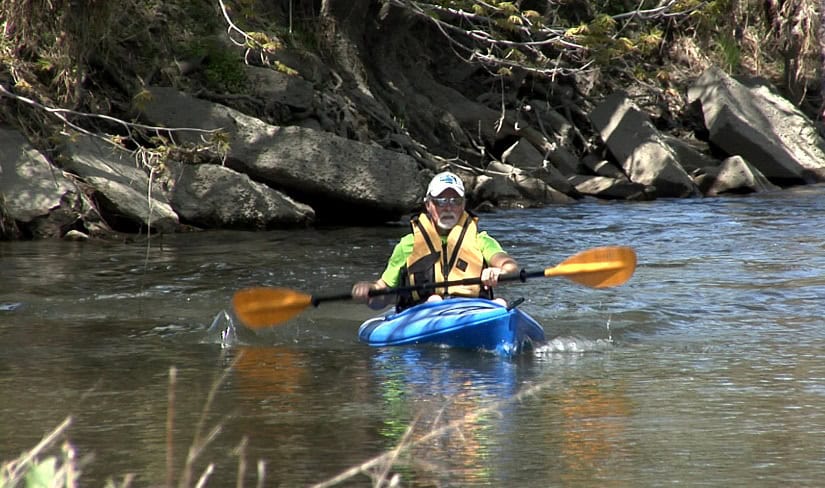
- Know Before you Go. Be sure to check conditions at your recreation destination before you head out. Make sure trail conditions are good and water conditions are safe for recreation. To learn more about amenities and accessibility at Southeast Michigan’s local parks, check out the Park Finder App.
- Know you Limits and Recognize Hazards. A challenge can be fun, but it is important to stay within your limits when swimming, boating, and hiking, in order to ensure your safety and the safety of others. Be aware of water and weather conditions, and if it’s dangerous, wait before you recreate.
- Bring the Proper Equipment. Be sure to bring anything you might need when hiking or out on the water. Wear a safety vest while boating and a helmet when required.
- Leave No Trace. Respect our region’s natural resources. Be sure that everything that came with you on your adventure leaves with you.
- Be Inclusive. Our parks and waters are for everyone, and it is important to be respectful of all identifies and abilities while out recreating.
Additional Resources
If you see pollution, report it!
An illicit discharge is any release of polluting material, such as sediment, nutrients, oil, and bacteria. These discharges can drain to lakes and streams via storm drains. Communities in Southeast Michigan are required to prevent illicit discharges from entering storm water to support water quality and quality of life. You can do your part by notifying the appropriate agency when you spot a potential illicit discharge.
watershed partners
Partnerships are essential to the success of One Water. Many local watershed groups have important educational resources on wastewater, drinking water, and stormwater. Use the tool below to discover which watershed you live in. To learn more about water issues and topics in your own watershed, visit your local watersheds website.
Alliance of Downriver Watersheds combines the Ecorse Creek Watershed, Combined Downriver Watershed, and the Lower Huron Subwatershed into one planning organization.
Alliance of Rouge Communities (ARC) is a voluntary public watershed entity currently comprised of members representing public agencies with water management responsibilities whose jurisdictional boundaries are totally or in part located within the Rouge River Watershed.
Friends of the Rouge is a local nonprofit organization dedicated to promoting restoration and stewardship of the Rouge River through education and citizen involvement.
Friends of the Detroit River is a nonprofit organization seeking to enhance the environmental, educational, economic, cultural, and recreational opportunities associated with the Detroit River Watershed through citizen involvement and community action.
The River Raisin Watershed Council is a nonprofit organization with a growing constituency of individuals, businesses, municipalities, and community groups seeking to protect the natural resources of the watershed.
The Friends of the Shiawassee River is a nonprofit organization committed to improving the environment, promoting the responsible use of, and enhancing the appreciation of the Shiawassee River.
The Huron River Watershed Council is the first and oldest river protection group in Michigan. Founded in 1965 as a public, nonprofit organization, it is a coalition of Huron Valley residents, businesses, and local governments established under Michigan’s Local River Management Act (253 P.A. 1964). Its mission is to inspire attitudes, behaviors, and economies that protect, rehabilitate, and sustain the Huron River system.
The Clinton River Watershed Council is a nonprofit organization dedicated to protecting, enhancing, and celebrating the Clinton River, its watershed, and Lake St. Clair.
Friends of the St. Clair River Watershed is a nonprofit organization providing fun, educational experiences that engage the community in protecting water resources while providing restoration and protection of the St. Clair River and other Great Lakes Areas of Concern.

